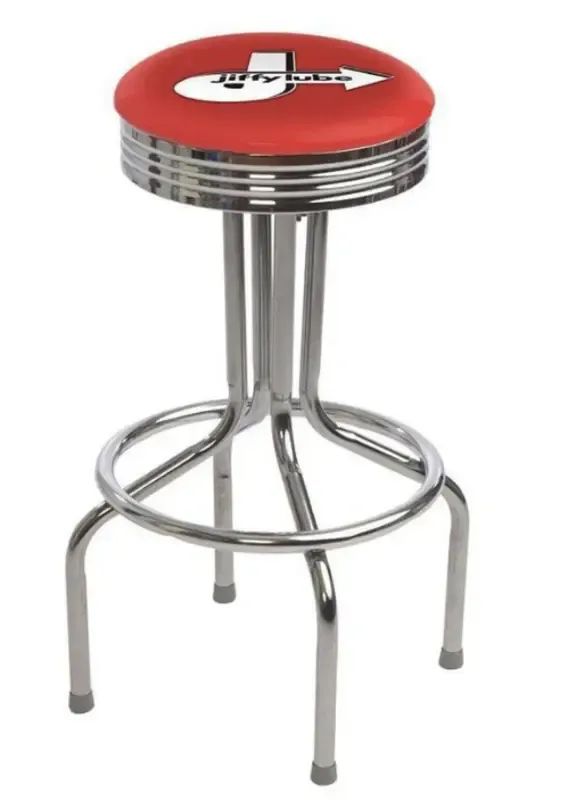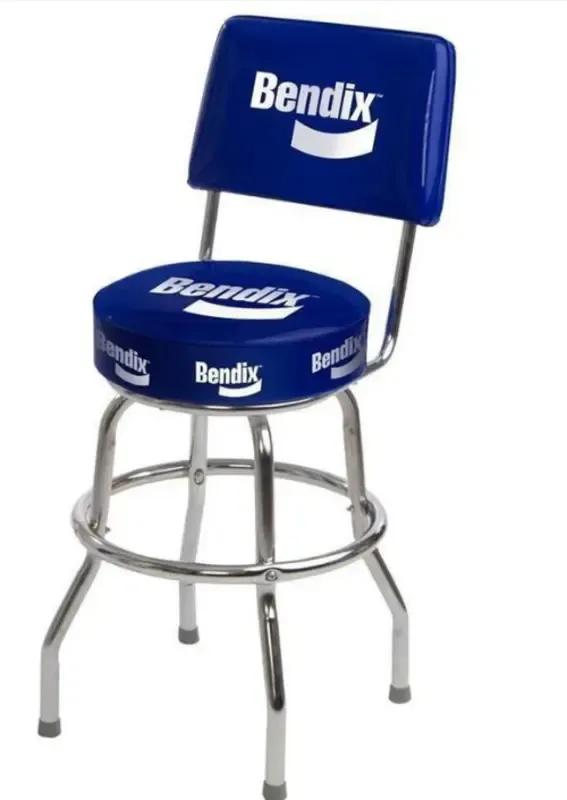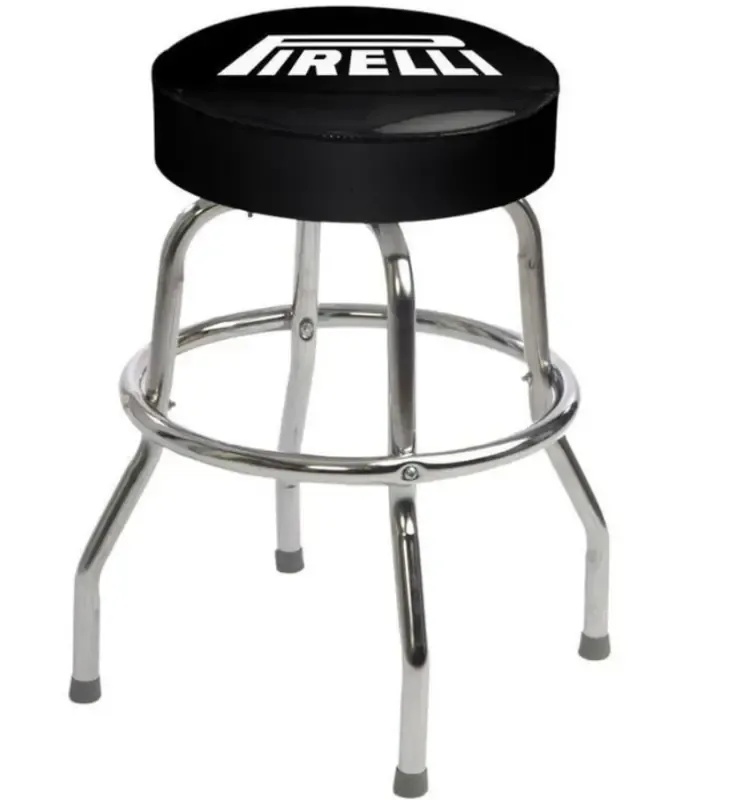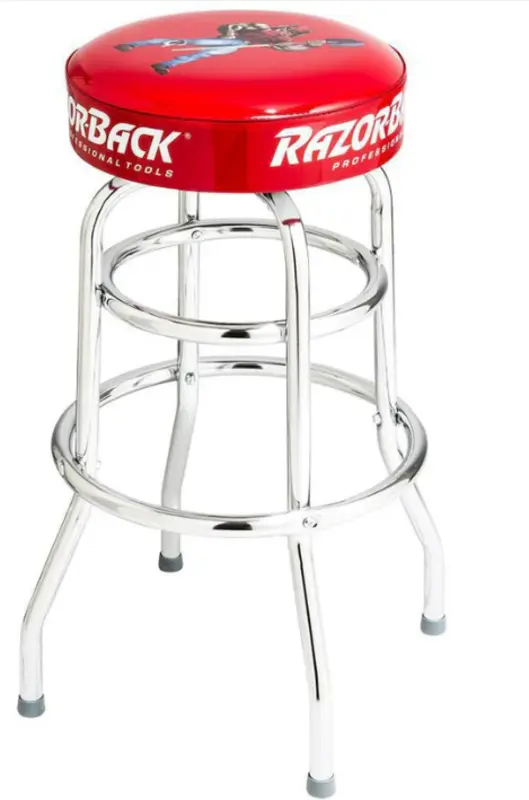10/12/2024
Why Maximizing Seating Matters
For businesses, maximizing seating is crucial, it impacts revenue by accommodating more customers without expanding your physical footprint. At home, it means creating functional, inviting spaces that work for gatherings, dining, or daily living. A 25% increase in seating can make all the difference.
Why Bar Stools ?
Bar stools are tall, space-saving chairs designed for use in small public spaces.Their slim profiles and elevated heights make them perfect for maximizing seating around counters or high-top tables without crowding the floor.
Unlike traditional chairs, bar stools can adapt to various layouts, including home kitchens, patios, and even office breakrooms. They feature a compact design that fits neatly under counters or high tables, keeping the floor area open and clutter-free.
Their elevated height allows guests to sit at eye level with the counter, enhancing comfort and making interactions with servers or bartenders more seamless.
Features That Promote Maximizing Seating
Bar stools were created to making the most of small spaces. With their sleek design and functional features, they help create comfortable and functional seating areas.
1. Armless Design
Bar stools without armrests take up less room and create an open layout. They allow people to sit closer together, making it easier to accommodate more seating around a counter or table. The armless design also encourages free movement, perfect for socializing in small areas.
2. Backless Stools
Backless bar stools can be tucked neatly under a counter or table when not in use. This keeps the floor space clear and makes the room feel less crowded. Backless designs are ideal for areas where you need flexible seating that can be easily moved or stored.
3. Swivel Functionality
Swivel bar stools allow users to turn and face any direction without needing to move the stool itself. This feature makes them perfect for spaces where people want to chat or interact across different areas, like open-concept kitchens or small bars.
4. Height Adjustment
Adjustable-height bar stools are great for spaces with counters or tables at varying heights. With a simple adjustment, they can fit different setups, making them versatile for both kids and adults. This feature also means you don’t need multiple types of seating for different surfaces.
Cafés and Small Restaurants
In compact dining spots, bar stools for small spaces maximize seating without overwhelming the layout. They fit neatly along counters or bar tables, allowing for flexible, adaptable seating. By offering quick adjustments for solo or group guests, they help businesses serve more patrons comfortably.
Home Kitchens and Kitchen Islands
Bar stools bring practical style to kitchen island seating without crowding the main dining area. Perfect for a quick bite or casual conversation, they create a cozy gathering spot. Their compact frames allow movement around the kitchen, keeping the area functional and open.
Event Venues and Outdoor Spaces
For outdoor bar seating and event venues, bar stools add adaptable and stackable options that can handle changing needs. In outdoor patios, they provide elevated, stylish seating that saves space and looks great. Their easy storage and movement make them ideal for events of any size.
Practical Breakdown: How Bar Stools Increase Seating by 25%
1. Compact Design for More Seating
Bar stools have a slim frame and usually lack armrests and backs, taking up far less room than regular chairs. In cafés, restaurants, and bars, using space-saving bar stools lets you add one or two extra seats per counter or high-top table. This simple change can boost seating capacity by about 25% without crowding the space.
2. Maximizing Vertical Space with Counter Height
By raising seats to counter height, bar stools make the most of vertical space. This layout helps keep floors open for walkways, giving guests more room and making service areas more efficient. Bar stools fit perfectly under counters, allowing more seats along the same length. For example, a 10-foot counter might fit 4–5 chairs but can hold 6–7 bar stools, giving a 25–30% increase in seating.
3. Flexible, Movable Seating for Events
Lightweight and easy to reposition, bar stools provide flexible seating options. For example, event spaces or small eateries can quickly adjust layouts to accommodate varying group sizes, peak hours, or special events. In a space that might hold 20 traditional chairs, switching to bar stools can fit up to 25 people comfortably, boosting capacity by around 25% without adding bulk.
4. Stackable and Space-Saving Storage
Most stools are stackable, making them ideal for venues with limited storage. During off-peak hours, stackable stools can be tucked away, freeing up space. This feature allows businesses to adapt seating as needed without permanently taking up floor space. \
These factors make bar stools an effective choice for maximizing seating and increasing patron capacity by around 25%, whether for a restaurant, café, or event setting.
Bar Stool Height Guide
Selecting the right bar stool height is essential for creating a comfortable and functional seating area in your home or business. Whether you're outfitting a kitchen island, a home bar, or a café counter, the correct stool height ensures that everyone can sit comfortably and enjoy the space to its fullest.
This quick guide will walk you through the different types of bar stools and help you match them with your counter or table height, making your selection process simple and stress-free.
Counter Stools (23-28 inches tall) - Perfect for counters 35-40 inches high
Counter stools are designed to pair with standard kitchen counters and islands. They provide approximately 10 inches of legroom between the stool seat and the counter, which is ideal for comfortable seating without feeling cramped. These stools are popular in home kitchens, allowing you to eat, work, or socialize with ease. Their height facilitates easy conversation and interaction, making your kitchen a welcoming gathering spot.
Bar Stools (29-32 inches tall) - Ideal for bars and tables 41-43 inches high
Bar stools are suited for slightly taller surfaces like home bars, high-top dining tables, and commercial bar areas. Sitting at this height aligns you perfectly with the counter or tabletop, so you won't have to lean up or down while eating or chatting. Bar stools at this height are common in both residential and commercial settings, offering a relaxed and casual seating option that encourages socializing.
Tall Bar Stools (33-36 inches tall) - Best for high counters and tables 44-47 inches high
Tall bar stools are made for the tallest counters and tables, often found in pubs, sports bars, and certain commercial spaces. These stools offer extra legroom and a higher vantage point, which can enhance your view in a crowded setting. They're also a stylish choice for events or venues where standing-room-only is common but some elevated seating is desired. Tall bar stools add a unique touch to your space, combining comfort with a distinct aesthetic appeal.
Note: Remember to measure your counter or table height before selecting stools to ensure a perfect match.
Common Questions About Bar Stools
We’ve put together this list of top questions and answers to help you confidently choose the right bar stools for your space. Covering essentials like comfort, style, and layout tips, this guide is designed to answer your key questions and make the selection process simple and stress-free.
How do I know how many bar stools I need?
To achieve comfortable seating and optimal layout, bar stools should generally be spaced 25-31 inches apart from the middle of one seat back to the next. This spacing allows guests enough elbow room without feeling cramped and makes movement easier. If you’re using swivel stools, it’s best to allow a bit more space between each stool to accommodate turning. This ideal spacing ensures that your setup feels open and accessible, perfect for both social gatherings and everyday use.
Are bar stools comfortable for daily use?
Bar stools are versatile enough for daily use, especially those designed with ergonomics in mind. Stools with back support, footrests, and padded seats offer ample comfort for extended periods. While backless stools are fine for short stays, opting for stools with lumbar support can enhance comfort for longer use, making them suitable even for everyday seating in kitchens or home offices.
What’s the best bar stool style for a small space?
In small spaces, sleek, low-profile bar stools work best as they create an open feel without taking up too much visual space. Backless or stackable stools can be tucked under counters when not in use, freeing up floor space. Adjustable stools add flexibility, allowing you to switch between different counter heights or use them for multiple purposes, such as kitchen and bar seating.
Can bar stools be used for dining tables?
Yes, bar stools can work well with taller dining tables, especially if you have a counter-height or pub-style table. For standard-height tables, however, regular dining chairs are better suited to ensure guests sit at a comfortable level. For versatile dining, consider using adjustable-height stools that can adapt to different tables, allowing you to mix and match seating options.
Are backless bar stools as comfortable as backed stools?
Backless bar stools are great for quick, casual seating as they promote a social, open environment and take up less space. However, for prolonged sitting, backed stools are typically more comfortable as they offer support for the lower back. Choosing padded, ergonomically designed stools can help make backless options more comfortable for longer use without compromising style.
What are the pros of bar stools compared to regular chairs?
Bar stools offer several advantages over traditional chairs, especially for maximizing space. They increase seating per square foot, making them ideal for compact areas. Their design promotes a sleek, open look and encourages social interaction, as guests can easily swivel or shift seats to converse. Lightweight and stackable options also make bar stools easy to store and rearrange, which is beneficial in both home and commercial settings where adaptable seating is essential.
How do I choose the right bar stool?
To choose the right bar stool, start by measuring your counter height to determine the correct stool height—typically 24-27 inches for counters and 28-33 inches for bars. Consider your room layout and style preferences; swivel stools suit social spaces, while stackable or folding stools are practical for tight storage. For daily comfort, look for features like padded seats or backrests, especially if the stools will be used for extended sitting.
Can you sit comfortably on bar stools for a long time?
Not all bar stools are created equal. While some are perfect for short breaks, others are built for the long haul. Bar stools with features like cushioned seats, sturdy footrests, and back support deliver ultimate comfort.
Conclusion - Make the Most of Your Space with Bar Stools
Whether in a bustling café, a cozy home kitchen, or an event venue, bar stools are a practical choice for increasing seating capacity without crowding the space.
By choosing the right design, height, and features, you can boost seating by up to 25%, creating an efficient and welcoming space for everyone. Interested in exploring custom bar stools for your space? Contact us to find the perfect fit for your needs.
Olivia Smith
Lead Content Strategist
Olivia Smith is a marketing and design expert who specializes in transforming spaces to maximize impact and functionality. With a deep understanding of promotional product trends, Olivia helps brands create stylish, space-efficient environments that attract and engage.




